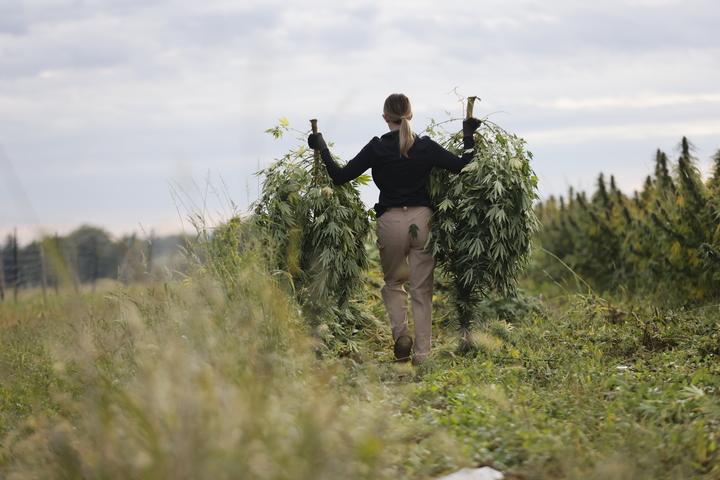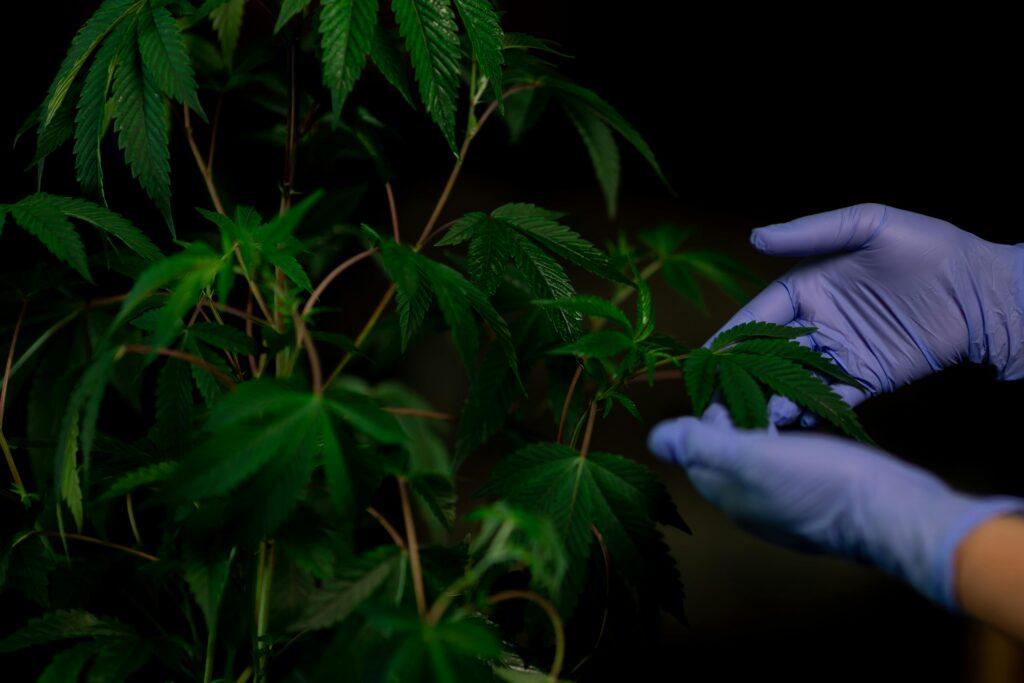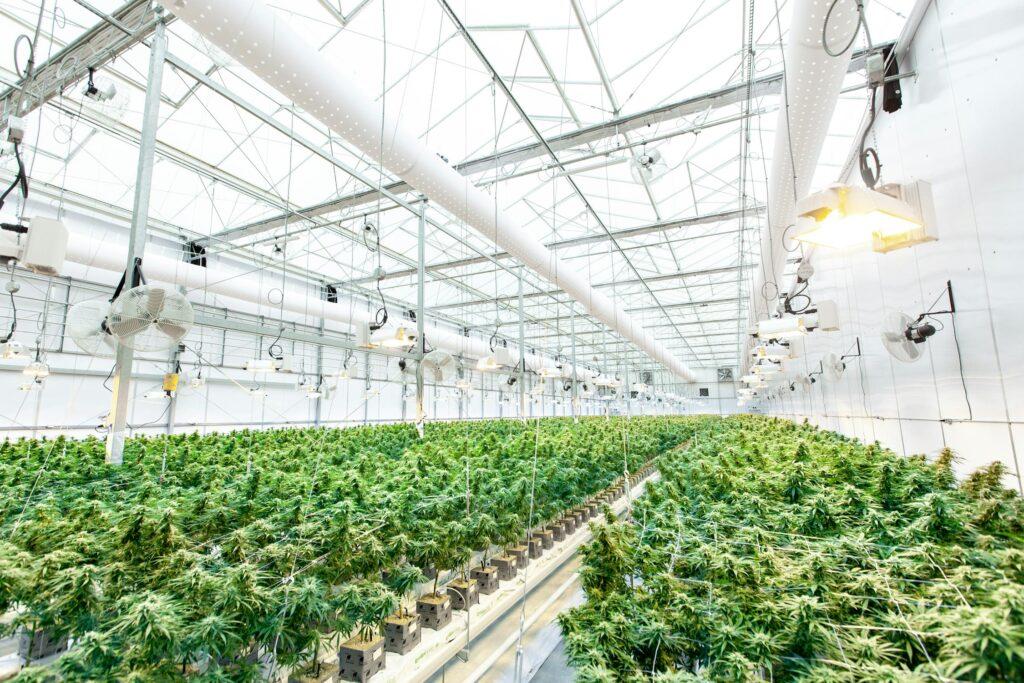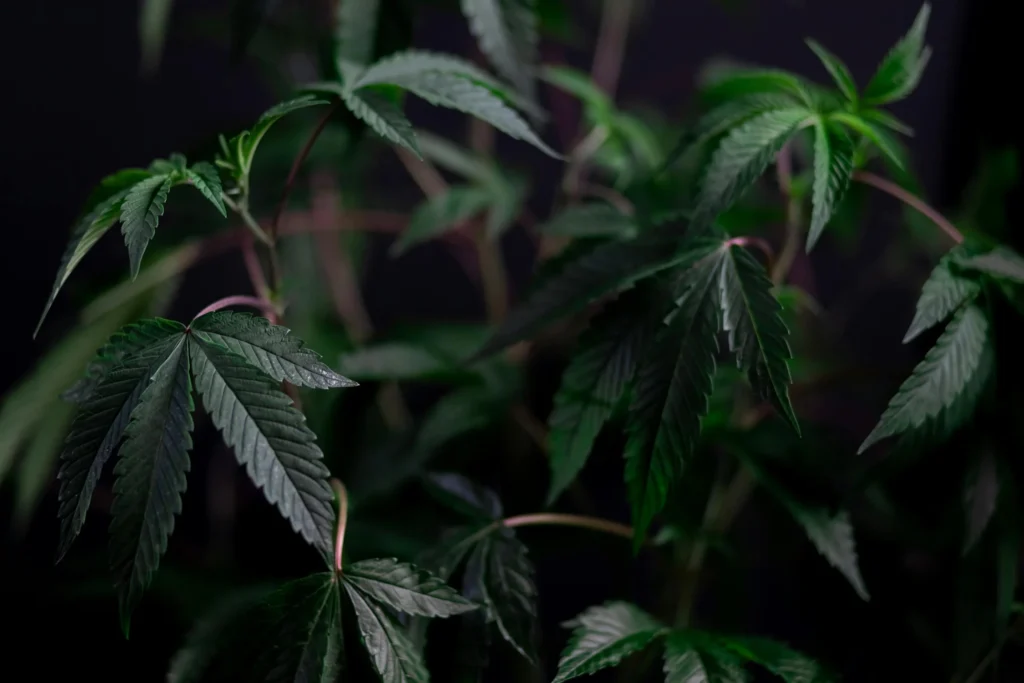
Behind the Scenes at a cGMP Manufacturing Facility
3/12/2024
Compliance & Regulation • Compliance & Regulation
Contents
Understanding cGMP
The cGMP Certification Process
Key Areas of a cGMP Facility
Personnel Training and Operations
Technology and Equipment
Documentation and Record-Keeping
Challenges and Solutions
Impact of cGMP on Consumers
The Lowdown on cGMP
Current Good Manufacturing Practices, commonly known as cGMP, are a set of guidelines that ensure consumers get access to safe, consumable, and unadulterated products. They play a critical role in the safety, consistency, and quality of manufactured goods.
cGMP helps ensure the production of effective products that protect the health and safety of customers. It also gives manufactures credibility and paints them as a reputable producer.
Ready to learn more? Keep reading to find out what goes on behind the scenes at a cGMP manufacturing facility.
Understanding cGMP
The Food and Drug Administration (FDA) sets the requirements for Good Manufacturing Practices in the USA.
It specifies rules for each aspect of manufacturing, processing, and packaging of a product. The regulations ensure goods are safe to use and contain the listed ingredients and potency.
The goal of the FDA is to ensure goods are produced in accordance with quality standards. Manufacturers should adhere to cGMPs to guarantee safe, unadulterated, and consumable goods.
The FDA doesn’t yet have authority over the cannabis industry, but it still provides guidance in the Code of Federal Regulations. Cannabis is listed under the dietary supplements category. GMPs can be implemented with ISO 9001 or separately.
While the FDA may not currently mandate GMP certification for cannabis products, it’ll likely become obligatory for producers in the future. Proactively addressing this potential requirement is advisable.
The Role of cGMP in Quality Assurance
Let’s explore how each aspect of GMP contributes to quality assurance.
- Regulatory compliance: Adhering to cGMP regulations ensures manufacturers comply with industry standards.
- Documentation and record-keeping: Thorough documentation of processes, procedures, and activities is a core element of cGMP. It provides a transparent and traceable record of every aspect of production, contributing to accountability.
- Facility design and maintenance: cGMP specifies requirements for facility design and maintenance to create a controlled environment that minimizes the risk of contamination. Clean and well-maintained facilities are essential for producing high-quality products.
- Quality control checks: Regular quality control checks at different stages of production verify that products meet predefined quality specifications.
- Personnel training: Ongoing training for personnel is an integral part of cGMP. Well-trained staff are better equipped to follow established procedures, reducing the likelihood of errors and contributing to overall quality.
- Change control procedures: cGMP outlines procedures for managing changes to processes, equipment, or facilities. Modifications are carefully evaluated, approved, and implemented in a controlled manner.
- Traceability and accountability: Traceability ensures that each batch of a product can be traced back to its source. It enables accountability and quick action in case of quality or safety concerns.
- Continuous improvement: cGMP fosters a culture of continuous improvement through regular audits and assessments. Identifying areas for enhancement and implementing corrective actions contributes to quality assurance.
The cGMP Certification Process
cGMP requirements can differ across jurisdictions and often depend on the type of cannabis being produced.
Below is a brief overview of the process for obtaining certification.
- Commitment from management: Establish a commitment from top management to implement and adhere to cGMP standards. It should include the allocation of necessary resources to effectively implement a cGMP system.
- Prepare early: Conduct an internal analysis to assess the timeline for obtaining cGMP certification. Generate a list of existing programs and identify any gaps against the cGMP audit scheme.
- Assess current level of conformance: Establish an audit team to conduct an assessment of the organization against cGMP standards. Review the system against the checklist, focusing on existing practices and marking areas for improvement.
- Implementation and teamwork: Establish an interdepartmental team to implement tasks based on the findings from the initial assessment.
- Training: Implement training programs for all personnel involved in the cGMP system. Ensure employees understand what cGMPs are and how they apply to and benefit their daily activities. Training helps bridge gaps between different departments.
- Internal audit program: Establish an internal audit program to improve the organization and prepare for the cGMP audit. Break down the audit checklist into department or process-specific sections and determine the frequency of auditing them.
- Third-party audit: Schedule a third-party mock audit, which closely simulates an actual cGMP audit. A third-party company evaluates the site against specific cGMP standards and provides a formal report on any deficiencies found during the assessment.
- Address non-conformances and celebrate: After the third-party audit, address any non-conformances identified. After successfully closing out non-conformances, celebrate your achievement.
Regular Inspections and Compliance
Regular inspections help identify any deviations or non-compliance with cGMP standards. They assess whether processes, procedures, and documentation align with the established quality and safety requirements.

Key Areas of a cGMP Facility
The 5 P’s of GMPs are people, products, processes, procedures, and premises.
These categories can further be broken down into areas like quality management, sanitation and hygiene, building and facilities, equipment, raw materials, personnel, validation and qualification, complaints, documentation and record-keeping, and inspections and quality audits.
Let’s look at some key areas of a cGMP facility.
Raw Material Storage and Handling
All production materials must be adequately stored in accordance with the specified conditions. Implementing an effective stock management system is essential to verifying the accuracy and quality of all incoming materials.
Production Lines
Facilities are designed to prevent contamination, facilitate efficient material flow, and ensure proper segregation of different processing areas. Cleanrooms may be incorporated as needed to meet specific cleanliness standards outlined by cGMP.
Quality Control Laboratories
In-house laboratories generate information for informed decision-making. The data aids in assessing the effectiveness of manufacturing processes and implementing necessary adjustments.
Personnel Training and Operations
The significance of ongoing training for staff on cGMP can’t be overstated. Here are some reasons highlighting its importance.
- Regulatory compliance: Continuous training ensures staff is always up-to-date with the latest regulatory requirements, reducing the risk of non-compliance.
- Risk mitigation: Well-trained staff are better equipped to identify and address potential risks and deviations from cGMP standards.
- Adaptability: Continuous training ensures employees remain proficient in using new technologies and methodologies.
- Employee empowerment: Regular training empowers employees by enhancing their knowledge and skills. It can contribute to increased job satisfaction, morale, and a sense of responsibility, creating a positive impact on overall workplace culture.
- Audit preparedness: Regular training prepares staff for internal and external audits, making them more likely to be successful.
- Reduction in product recalls and wastage: Knowledgeable staff is less likely to make errors that could lead to product recalls or wastage.
Operational Protocols
Daily operational practices that align with cGMP standards are crucial. Here are some ways to achieve them.
- Conduct regular training sessions to keep employees informed about cGMP regulations.
- Enforce strict personal hygiene practices, including proper handwashing, use of protective clothing, and adherence to hygiene protocols, to prevent contamination.
- Implement thorough cleaning procedures for equipment, workspaces, and facilities to maintain a clean and sanitized environment.
- Ensure accurate and comprehensive documentation of all processes.
- Conduct routine quality control checks at various stages of production
- Establish a regular schedule for equipment maintenance and calibration to ensure that machinery operates efficiently and meets cGMP specifications.
- Perform regular batch testing and analysis to verify that products meet specified quality standards before release for distribution.
- Monitor and control environmental factors, like temperature and humidity, to ensure they align with cGMP guidelines.
- Conduct regular internal audits and self-inspections to identify areas of improvement and ensure continuous compliance.
- Establish traceability systems and recall procedures to identify and withdraw products in the event of non-compliance or safety concerns.
- Foster open communication channels for reporting any deviations, concerns, or potential issues.
Technology and Equipment
Technology plays a pivotal role in upholding cGMP standards and improving product quality. It offers real-time monitoring, enhances data integrity, ensures traceability, and supports efficient laboratory operations.
Advanced Manufacturing Technologies
Here are some ways to use advanced manufacturing technologies to your advantage.
- Incorporate automated monitoring and control systems
- Use electronic batch records for documentation
- Install quality management software
- Identify patterns and trends with data analytics
- Incorporate electronic data integrity systems
- Use electronic signatures and authentication
- Consider cloud-based platforms
- Use mobile applications
- Incorporate AI

Equipment Maintenance and Calibration
Effective equipment maintenance, calibration, and validation procedures are crucial in ensuring the reliability, accuracy, and compliance of manufacturing processes.
Here’s an overview of the procedures for each aspect.
Equipment maintenance
- Establish a regular schedule for preventive maintenance tasks.
- Conduct routine inspections, cleaning, and lubrication to prevent wear and tear.
- Document all maintenance activities in a dedicated log.
- Implement a system for reporting and addressing unscheduled maintenance needs.
- Clearly define procedures for responding to equipment breakdowns.
- Maintain an inventory of critical spare parts.
Equipment calibration
- Develop a calibration schedule.
- Establish and maintain traceable calibration standards that align with national or international measurement standards.
- Develop detailed calibration procedures for each type of equipment.
- Ensure that calibration procedures are followed consistently and deviations are documented and addressed.
- Attach calibration labels to equipment.
Equipment validation
- Develop validation protocols outlining the specific tests and acceptance criteria for equipment validation.
- Verify that the equipment is installed correctly, according to manufacturer specifications and design requirements.
- Ensure equipment operates within specified parameters under normal working conditions.
- Demonstrate that the equipment consistently performs as intended in its operational environment.
Documentation and Record-Keeping
Documentation and record-keeping serve as the backbone of cGMP compliance and provide a structured and comprehensive framework. The following aspects highlight their significance.
- Standard operating procedures (SOPs): These documents outline step-by-step processes for each manufacturing step.
- Batch records: These documents keep track of the entire production process for each batch of a product.
- Training records: These documents show staff members are trained in cGMP practices.
- Quality control documentation: These records include testing protocols, results, and specifications.
- Equipment manuals: These documents have all the specifications for manufacturing equipment.
Apart from these documents, you should also incorporate audit trail records, supplier qualification records, deviation reports, change control procedures, and non-conformance documentation.
Traceability and Accountability
Detailed documentation allows for the traceability of each product batch. In the event of quality issues or recalls, the ability to trace products back through documentation is critical for identifying root causes and taking corrective actions.
Record-keeping establishes accountability by documenting who performed specific tasks, when they were completed, and under what conditions. This accountability is essential for maintaining the integrity of processes and ensuring responsible personnel are identified.
Challenges and Solutions
Facilities can overcome common cGMP challenges by leveraging technology, streamlining processes, and taking a proactive approach. Below are some practical ways to address various issues.
Changing regulatory landscape
- Challenge: Frequent updates to cGMP regulations can make it hard to keep up with evolving compliance requirements.
- Solution: Use advanced regulatory intelligence platforms that provide real-time updates on cGMP regulations.
Data integrity concerns
- Challenge: Data discrepancies or inaccuracies can compromise product quality and regulatory compliance.
- Solution: Adopt electronic quality management systems (eQMS) for efficient data management and real-time monitoring of cGMP processes.
Documentation management
- Challenge: Handling and organizing vast amounts of documentation can be overwhelming. Incomplete or disorganized documentation may lead to compliance gaps.
- Solution: Incorporate electronic document management systems for centralized and organized document management.
Equipment calibration and maintenance
- Challenge: Inaccurate measurements or equipment malfunctions can impact product quality.
- Solution: Implement predictive maintenance technologies using analytics.
Impact of cGMP on Consumers
cGMP has a profound impact on consumers. It directly benefits customers by ensuring the safety, quality, and consistency of products throughout the manufacturing process.
These practices establish robust standards for hygiene, sanitation, and manufacturing procedures. They minimize the risk of contamination and guarantee that products meet stringent safety criteria.
The emphasis on precise formulation, accurate labeling, and thorough testing protocols ensures consumers receive products with reliable efficacy and dosage information.
cGMP compliance also fosters transparency in manufacturing practices, allowing consumers to trust the integrity of the production process.
The commitment to adhering to industry standards and regulations builds confidence in the reliability of the products.
The Lowdown on cGMP
Delving behind the scenes at a cGMP manufacturing facility reveals a meticulous framework that ensures the safety, quality, and consistency of products.
Guided by stringent regulations, cGMP plays a pivotal role in the manufacturing industry. From personnel training and operational protocols to advanced technologies, equipment maintenance, and thorough documentation, each facet contributes to quality assurance.
The impact of cGMP extends to consumers, assuring safe, reliable, and transparent products.
Want to get more insights into a compliant-driven company? Check out Materia Regenerative.





